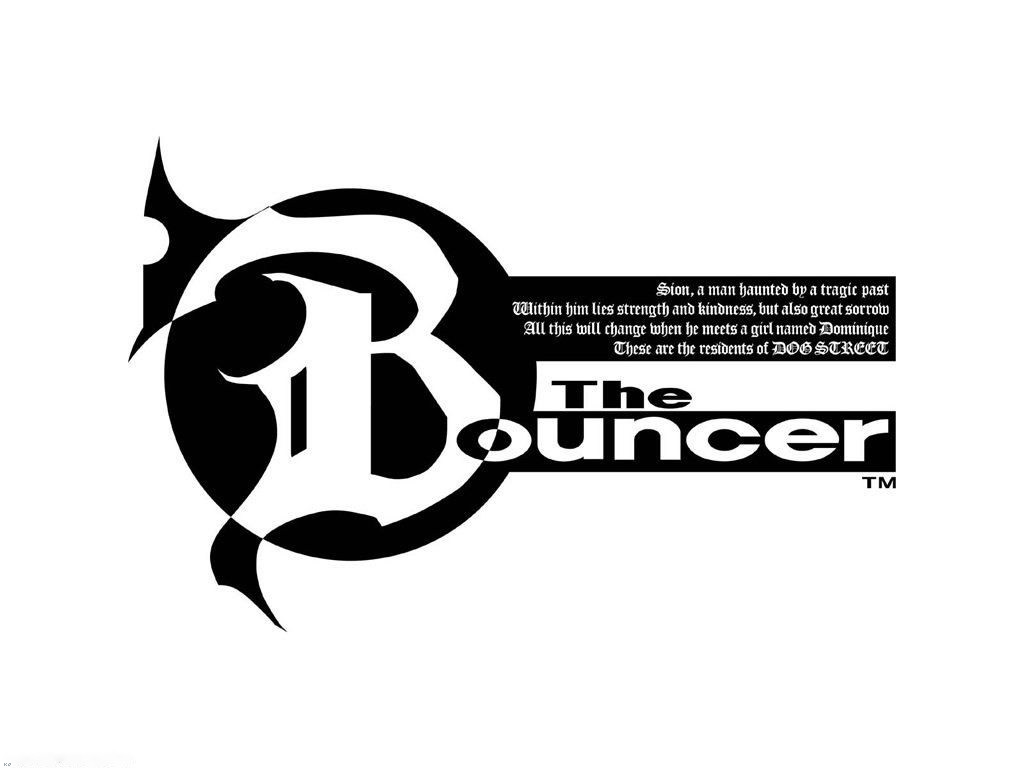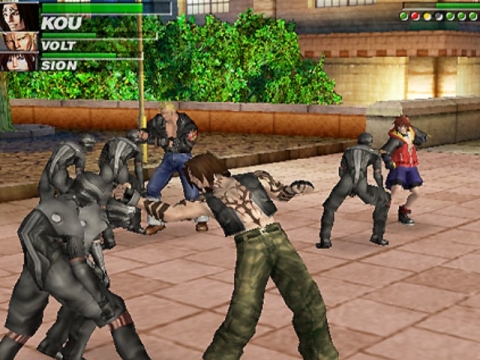Last updated on July 4, 2016
The first year of a new video game system, contrary to the modern era, always brought anticipation and excitement. There wasn’t the dread of paying hundreds of dollars for infinitesimal graphical improvements; you were participating in the next generation. This isn’t solely the role of video gamers; the developers, finding their new technological advances bearing fruit, decide to pursue new kinds of video games. They want to push the boundaries of what’s considered a “game”, and with this initial experimentation come a host of “launch” games and post-launch games that inspire and disappoint in equal measure. Even if some of these games were forgotten, they give video game developers new ideas and tools. Sometimes, they end up making little gems that, with a lower price point, become fun diversions.
One of those games was The Bouncer.
Squaresoft, still intoxicated with the idea of making a “cinematic game”, produced a boatload of games that ran the gamut from free-form explorations to focused movie-like video game experiences. The PS1 just wasn’t capable of fulfilling Squaresoft’s ambition, but the PS2 really launched this movement into high gear. Unforunately, they took these ideas too far, which culminated in the massive box office failure Final Fantasy: The Spirits Within. Hironobu Sakaguchi, creator of the Final Fantasy series, was unceremoniously relegated to producer status (which in Japan means “we respect your work, but due to social convention we won’t fire you”). Even so, a few gems managed to come out of Square in 2001, and I was a wide-eyed idealist. Why not buy it, right?
I paid full price for the thing after renting it. I’m not sure why, but the game spoke to me even in the face of mediocre review scores and overall scorn for the game’s “cutscenes”. You don’t “play” The Bouncer so much as you partipate in its story. This is a conscious decision on the developer’s part. According to the Bradygames guide, co-director Takashi Tokita wanted The Bouncer to be a “playable action movie”. By allowing the player to select from three different characters (bouncers, in our tale), you can see multiple perspectives of the same events. If you think about it in this sense, they’ve fulfilled that objective quite admirably. Remembering the FMV games of the 1990s, we came a long way from grainy video and nonexistent interaction; The Bouncer takes that dream and makes it a reality. Heck, it’s even got American and Japanese dialogue with subtitle like a DVD!
It’s interesting to note that many reviewers of 2001 stated that there’s not many places where you “play” the game – it’s mostly limited to the main game mechanic, which involves beating other people to a pulp with your fist. Most of it consists of sitting and watching cutscenes – which is exactly what some modern games do all the time, yet they’re praised to high heaven. If I was to compare, The Bouncer and Heavy Rain actually become quite similar. That’s just the luck of the draw that they were released in different eras, I suppose. At least The Bouncer doesn’t throw quick time events at you, and doesn’t let you skip action scenes.
Fitting to the name, The Bouncer is an action game in the style of Final Fight. Using a full 3D system, character punch, kick, and throw each other around. Usually, the odds will be stacked against your character, and paying attention will save your life. I wouldn’t say The Bouncer is a very easy game – in fact, its difficulty (in an unusual move for a Squaresoft game) depends on how you use your BP, or Bouncer Points, to develop characters. Taking a nod from its RPG roots, The Bouncer gives you the ability to add new moves and enhance stats of all three Bouncers, but their upgrades affect your overall Game Rank. The higher the grade, the more difficult enemies become and the more moves they attain in response to you. It’s worth it to play through the game three times, as it adds to the challenge. It also has a unique control scheme, using the pressure sensitive buttons on the PS2 to differentiate between light, medium, and hard attacks; it’s difficult to do this in a tense battle, but it really adds to immersion by having the force you use express itself on screen.
There’s some notable flaws – the fixed camera angles move with you. That might sound odd, but anybody who’s played it before gets what I’m talking about. You can’t control the camera, yet it tracks you when you walk out of range. It’ll stay in the new location, regardless of whether you can see yourself or not. This leads to some horribly cheap death if you’re not paying attention to where the camera is. Furthermore, the “lock-on” system basically ties you to the nearest target – not the one you want. This can lead to some major headaches when you have multiple targets attacking you at once (as in most battles). These are surmountable problems, considering the game’s so short (my latest playthrough is somewhere over an hour…so that’s REALLY short).
If I haven’t mentioned the plot…well, it’s standard Japanese anime melodrama with “mysterious” pasts and characters that fulfill basic stereotypes. To mention them would spoil the surprise, but a derivative plot doesn’t bring the experience down at all (nor does the Tetsuya Nomura character designs). It’s still just as fun, and challenging, eleven years after it was first released.
However, The Bouncer was released in a landmark year (Zone of the Enders, MGS2 and FFX, just to name three games). It fell by the wayside as more popular franchises and new ideas came into the fray. The Bouncer was a little ahead of its time, but it really wasn’t forgotten. Other games took its myriad ideas and became better as a result. Cinematic experience became a norm, even an expectation in the mainstream game market. It wasn’t solely by Squaresoft, but that was their intention all along, starting with Final Fantasy VI. It’s a little weird that an quirky little game like this was a progenitor for so much of our modern gaming landscape, yet has been forgotten so fast. We forgive so many game for having clunky mechanics, yet The Bouncer was reviled for its small missteps (a bad camera and odd chase sequences being paramount in my mind). Its control was innovative, yet wonky. Yet The Bouncer gets the last laugh; so many games have copied its mistakes that it’s just a little odd to say “I told you so.” Rather, some games take the risks and create the building blocks for the future. As Matthew 5 says:
3 “Blessed are the poor in spirit, for theirs is the kingdom of heaven.
4 “Blessed are those who mourn, for they shall be comforted.
5 “Blessed are the gentle, for they shall inherit the earth.
Indeed. As in video games, as in life. The Bouncer, not recognized in name, contributed a great deal to the cinematic experiences we enjoy today. It just won’t get that recognition, and that’s a shame. It does it better than many of today’s games; give it a shot.


